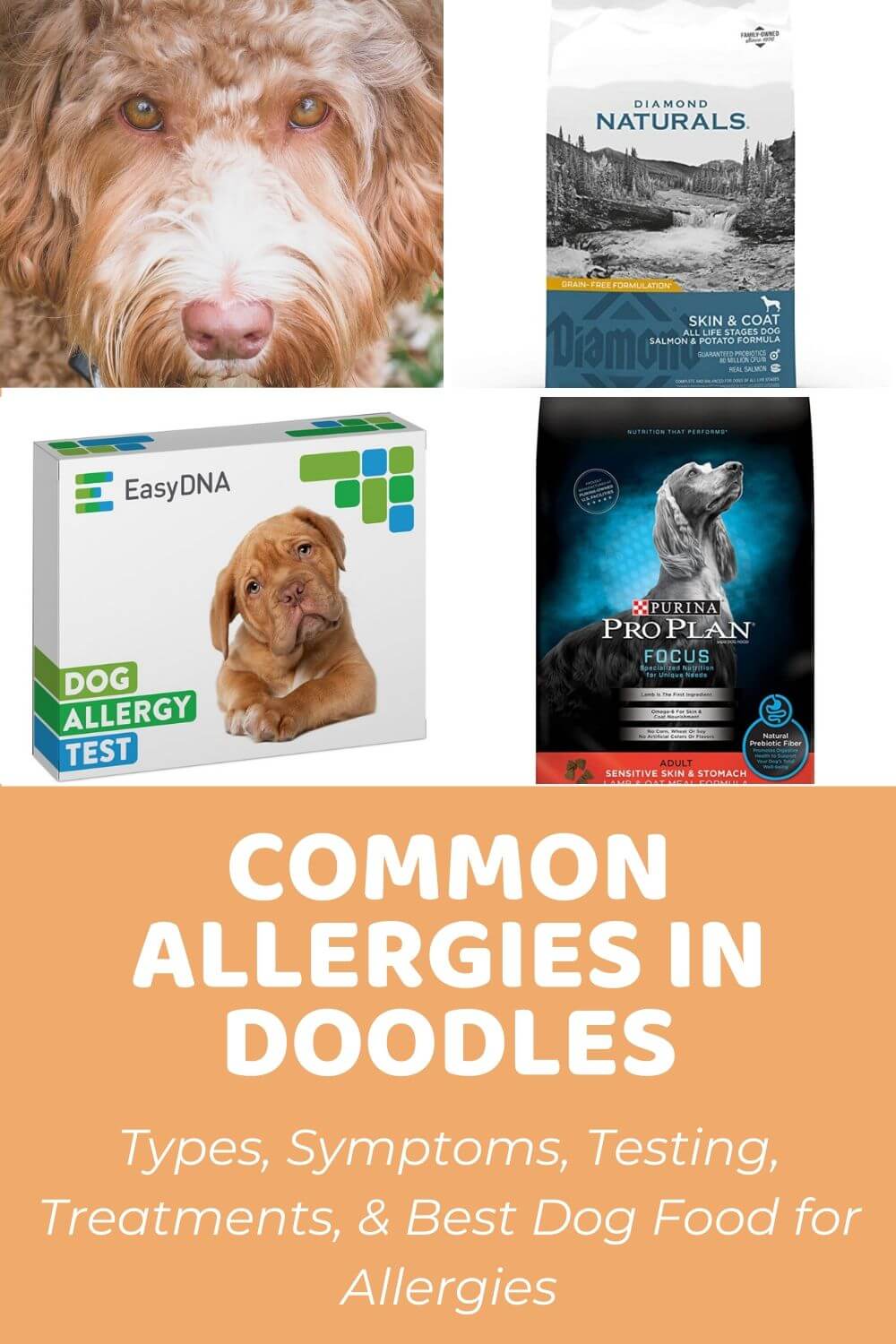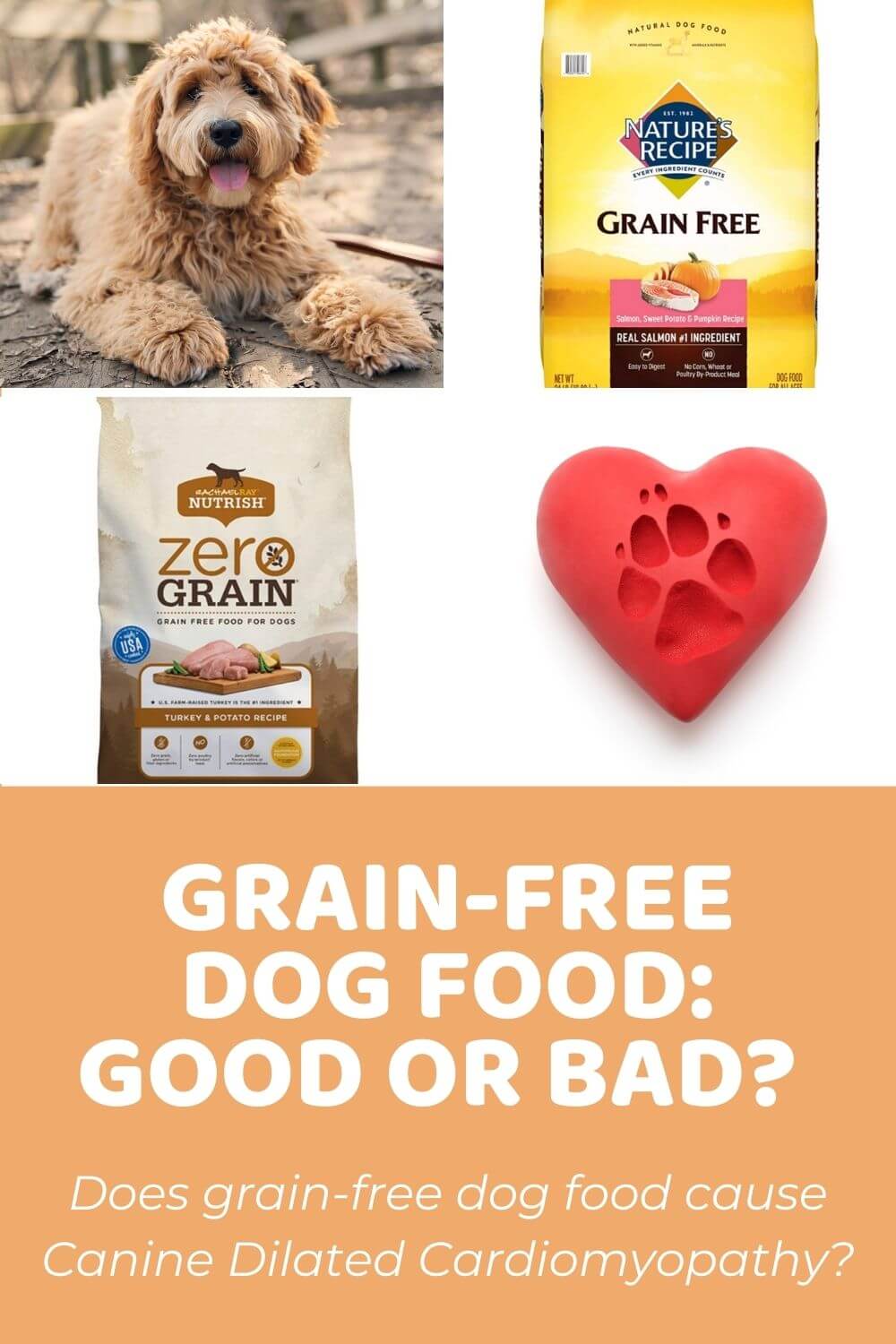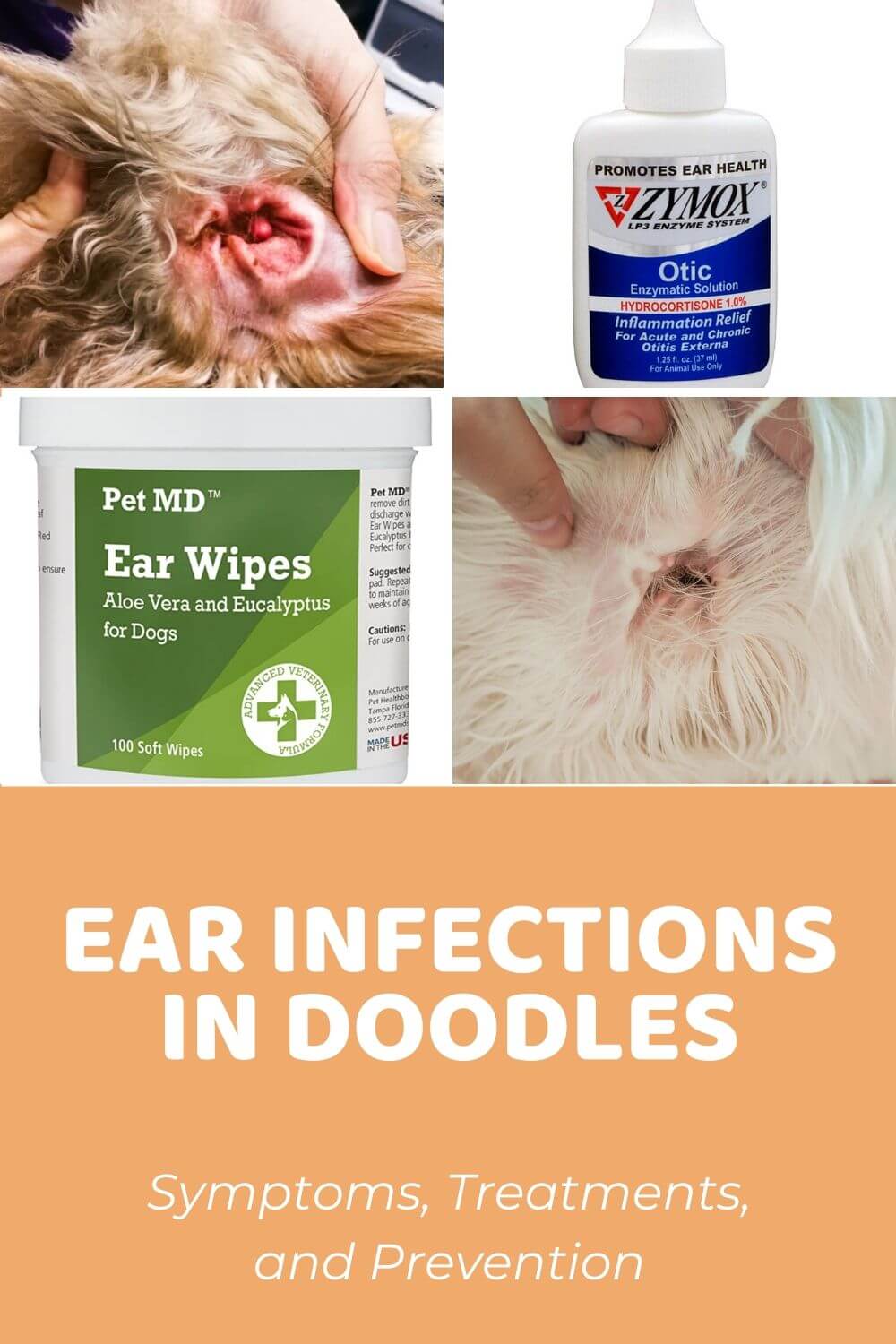While many canine experts would label dogs as omnivores for their reliance on a variety of food groups, there’s no doubt that top-quality meat is crucial to a dog’s diet. It should be the top ingredient in any kibble you give to your pup and constitute more than 18% of its makeup. Given its importance, you’ll want to choose the right protein source for your pup. That’s why we have decided to dive deep into various aspects of the most common choices (beef vs chicken vs lamb dog food) to see which is the best of the bunch and help you make the right choice for your Doodle.
Table of Contents
- Picking The Right Kibble For Your Pooch
- Beef Dog Food
- Chicken Dog Food
- Lamb Dog Food
- Beef vs Chicken vs Lamb Dog Food: Quick Rundown
- The Overall Winner
- Beef vs Chicken Dog Food: Frequently Asked Questions
Picking The Right Kibble For Your Pooch
When scouting stores for the right kibble, you’ll need to be thinking about a few things. Obviously, price is a top priority. The great news is that a high-quality kibble doesn’t need to cost the earth. You can get top picks from well-known brands at a reasonable price. You’ll just need to be sure the kibble provides balanced nutrition for your pet according to the American Feed Control Officials (AAFCO) guidelines.
Beyond that, you want to source food suitable for your pet in terms of their size and life stage. Kibble marketed towards smaller dogs isn’t just littler in size. The nutritional profile is more tailored towards teeny pups’ most speedy metabolism. Likewise, puppy/senior blends have different vitamins and minerals for their specific requirements – so you’ll want to get that bit right.
Your next thought might be about the flavor of the kibble—chicken, beef, lamb, etc. If you want your dog to actually eat it, you’ll need to factor this in. This shouldn’t be too much of a problem for bigger Doods, who might chow down on shoes if you’d let them! But smaller ones can be a little fussier about what they eat. What’s the point of picking the best food for your pal if they won’t even go near it?
We’ve looked at all these and more when comparing chicken, beef, and lamb as the top protein for dogs.
Keep in mind that many foods contain a variety of protein sources that may not be listed as flavors. Manufacturers often supplement their formulas with meals from chicken, salmon, etc., for a wider variety of nutrients. So, if you are purchasing a specific kibble to avoid a particular protein, you need to carefully check the label to be sure it’s not actually there.
Beef Dog Food
One of the most common proteins used in dog food, beef is a popular choice being tasty, affordable, and nutritious too. It’s rich in protein, iron, zinc, selenium, and vitamins B12, B3 and B6. However, beef tends to be higher in fat than other proteins, but this doesn’t seem to have the same health implications for dogs as it does for people, except in terms of weight gain.
Another important thing about beef vs chicken or lamb as a dog food ingredient is that it can vary considerably in terms of quality depending on the cut used in the food, not to mention the animal it was taken from and how it was raised and kept. Anything labeled ‘human-grade’ or ‘free-range’ will be the gold standard here, but naturally, that will be reflected in the price.
The downside of beef is that, while it’s excellent as a source of protein, with enough of a meaty smell to get your pups interested, it tends to be lacking in essential carbohydrates, so any foods with this as the main ingredient are going to need to include a variety of high-quality fruits and veggies. This way, you can be sure your pup is getting everything they need from their diet.
Pros
- High-quality meat
- Excellent source of protein
- Very nutrient dense
- Tempting smell and taste
- Widely available in kibble
Cons
- Low in essential carbohydrates
- High in fat – could lead to obesity
Let’s have a look at the two best beef dog food products…
Merrick Real Texas Beef + Sweet Potato Recipe Grain-Free Chicken-Free Adult Dry Dog Food
With its high protein content plus fiber, omega fatty acids and glucosamine, and chondroitin to support joint health, Merrick’s chicken-and-grain-free food is perfect for super high-energy hounds of all shapes and sizes.

Nutro Natural Choice Adult Beef & Brown Rice Recipe Dry Dog Food
Following the clean feed philosophy, Nutro packs its foods with high-quality recognizable ingredients enriched with omegas, fiber, and antioxidants for an excellent kibble that is rich in nutrients and full of flavor.
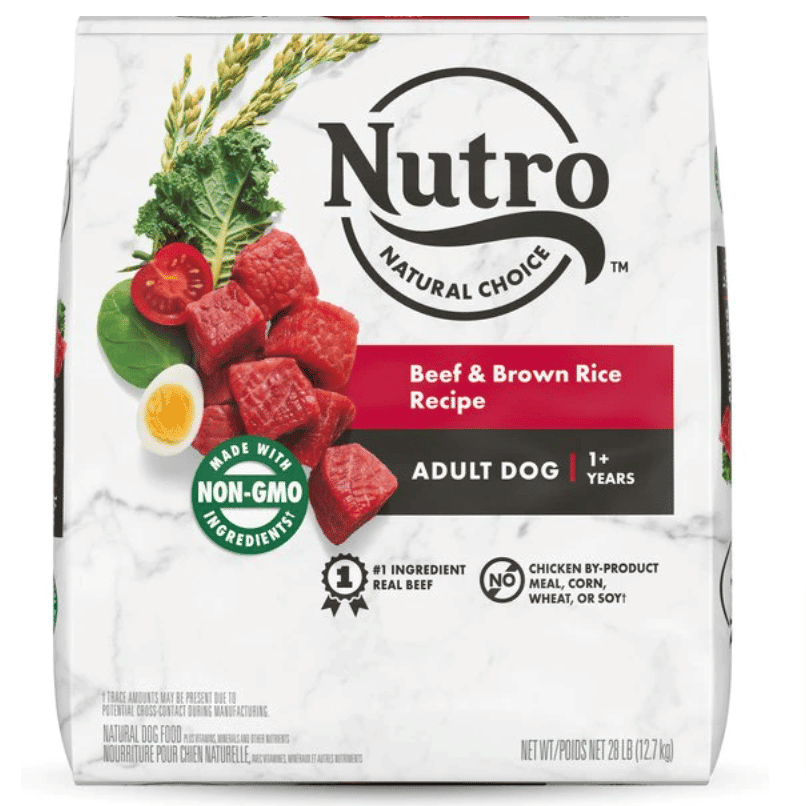
Chicken Dog Food
Far and away, the more often seen protein in dog food is chicken. It’s high in protein, low in saturated fat, and very affordable too. Plus, it’s a much-loved flavor for many pups. Chicken is also high in protein, B3 and B6 vitamins and phosphorous, and selenium, which are crucial for your pet’s continued health. This is a great choice for many.
In terms of beef vs chicken dog food, chicken comes out on top in terms of price. As protein is the most expensive component of any dog food, ones that have chicken as their top ingredient is likely to be a little more wallet-friendly. Other benefits include the leaner aspect of this meat, making it a better choice for pooches packing a few pounds. It also has far less of an environmental footprint than beef.
However, it is far more likely for canines to have intolerances to this protein source than any others. In fact, chicken is one of dogs’ most common food allergens. These can cause gastrointestinal issues such as sickness and diarrhea, skin issues like itching and hair loss, and ear infections and breathing problems. If you notice any of these in your pal, check with the vet to see whether their diet could be to blame.
Pros
- Great nutritional profile
- Full of canine-friendly flavor
- Lean protein for better health
- Very affordable meat type
- Widely available across brands
Cons
- Less aromatic than beef
- A common canine allergen
Let’s have a look at the two best chicken dog food products…
American Journey Active Life Formula Chicken, Brown Rice & Vegetables Recipe Dry Dog Food
Pups seem to love this delicious blend of high-quality deboned chicken, which is paired with an array of nutrient-packed veggies and easily-digested, fiber-rich grains, which supports healthy skin, a lustrous coat, and great overall well-being.
Wellness Complete Health Adult Deboned Chicken & Oatmeal Recipe Dry Dog Food
Developed without any meat by-products, fillers, or artificial preservatives, you can trust this excellent kibble with its premium proteins and wholesome grains to provide your pup with whole-body nutritional support.
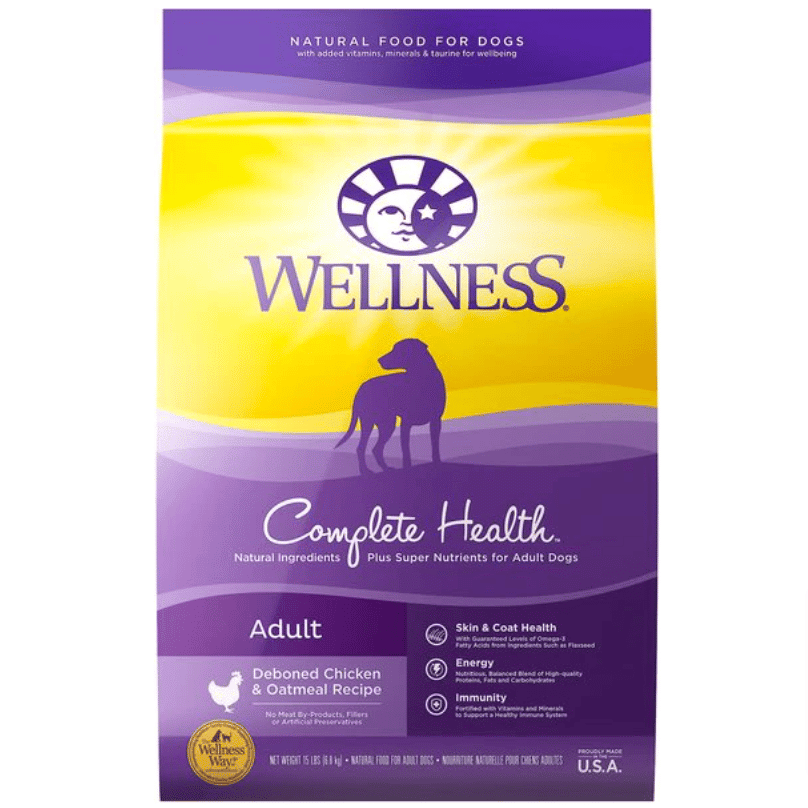
Do you know what health issues Doodles are prone to? Check out our overview of the most common Doodle health problems and diseases.
Lamb Dog Food
A little rarer, likely because of its higher price tag, lamb is another option, and a good one if you can’t get your Dood enthusiastic about either of the other two meats. Rich in B12 and B3 vitamins, omega 3 and omega 6 acids, and selenium and zinc, lamb has plenty to offer. It’s also rich in scent and flavor, making it a nice change of pace for many dogs when chicken and beef formulas get a bit old hat.
Compared to the other two, lamb will be at the higher end of the spectrum price-wise. And while this meat is another excellent source of protein (pound for pound, it does better than even beef), just like beef, it doesn’t contain all the nutrients your pup requires in their daily diet. This means you’ll need to ensure the other ingredients in the food (a nice wide range of fruits and veggies) are up to snuff.
Lamb, with its higher fat content, will be the best choice for your working dog or very active hound. It provides plenty of energy for pups always on the move. However, it might not be so great for your more sedentary or older four-legged friends as they could quickly start piling on the pounds. That being said, dogs are very rarely intolerant of lamb, so if you’re not having any luck with the other two in that respect, this could be a good choice.
Pros
- Extremely protein rich
- Supports an active lifestyle
- A taste dogs love
- Not a common allergen
- Great source of vital nutrients
Cons
- More expensive option
- Higher fat content – not good for pudgy pups
Let’s have a look at the two best lamb dog food products…
Taste of the Wild Sierra Mountain Grain-Free Dry Dog Food
Crafted with ingredients that mimic a dog’s ancestral diet, Taste of the Wild’s lamb kibble contains vitamins and minerals from real fruits and superfoods, omega fatty acids for skin and coat health, and nutrients for the energy your pet needs to thrive!
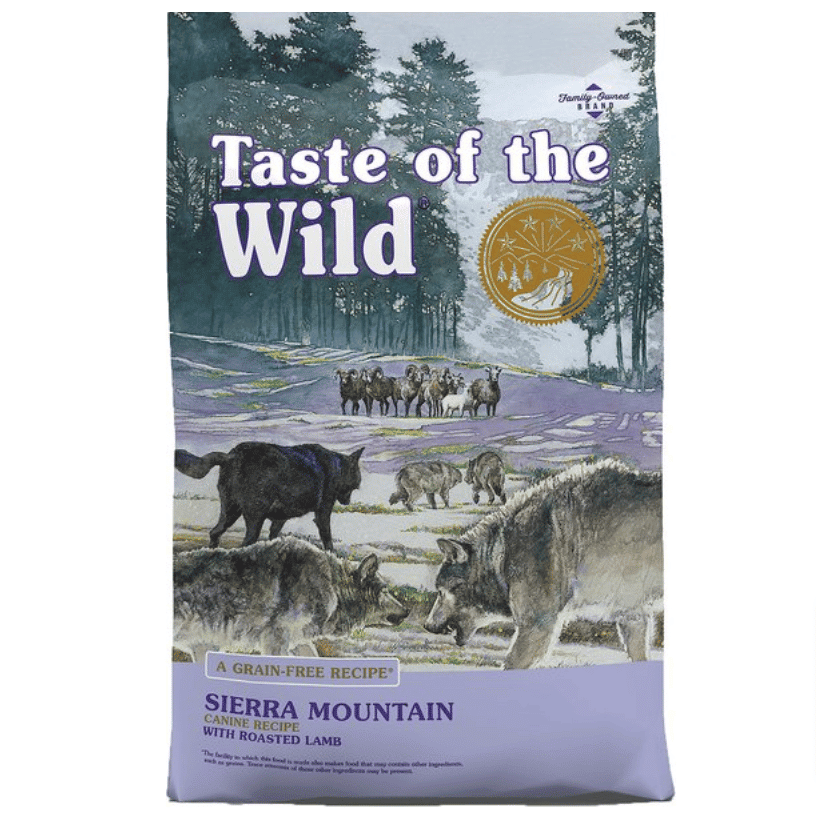
Zignature Lamb Limited Ingredient Formula Grain-Free Dry Dog Food
With just a handful of easily recognizable ingredients and a single protein source, you know exactly what you’re getting from Zignature’s Limited Ingredient blends. That is a balanced kibble with everything your hound needs to stay healthy and happy.

Find the Best Deal:
Beef vs Chicken vs Lamb Dog Food: Quick Rundown
Taste
Every pup has their likes and dislikes; food that appeals to one might not work for another. That makes it so difficult to gauge a universally good flavor for hounds. That being said, dogs tend to ‘taste with their noses,’ so to speak, which means they will likely be drawn to meats with stronger scents. With its succulent scent, this makes lamb the number one pick here.
- 1st: Lamb
- 2nd: Beef
- 3rd: Chicken
Quality
Again, tricky to gauge. This will depend a lot on the brand and the cuts of meat they use. Manufacturers may look to reduce costs with lamb foods as the meat is so highly-priced, and chicken formulas can be made cheaper and cheaper by using worse-quality meat. That’s why we are selecting beef as our winner here. It’s widely available and not quite as expensive, yet still considered more premium meat than chicken.
- 1st: Beef
- 2nd: Lamb
- 3rd: Chicken
Price
Chicken is the clear winner here, no contest. As chicken is a much cheaper protein than the other two options, manufacturers can raise the quality of the other ingredients in their foods without making the overall cost to the purchaser prohibitively expensive. That’s why many owners opt for a chicken blend, and there’s no reason why they shouldn’t.
- 1st: Chicken
- 2nd: Beef
- 3rd: Lamb
Nutritional Profile
From our perspective, chicken is the obvious choice, nutritionally speaking. It’s an excellent source of lean protein, being low in saturated fat. However, this isn’t dangerous for dogs in the same way that it is for people. Canines utilize fat as their primary energy source, so they need a good amount. With the highest protein and fat content, lamb is the winner unless your pooch is overweight, of course.
- 1st: Lamb
- 2nd: Beef
- 3rd: Chicken
Environmental Factors
Chicken will hands down be the best choice if you’re looking for a way to minimize your footprint. Pasture-raised or free-range chickens require much less feed and water than the other animals on this list, plus they don’t digest their food through enteric fermentation, as cows and lambs do, which produces those worrying greenhouse gases we hear so much about.
- 1st: Chicken
- 2nd: Lamb
- 3rd: Beef
Availability
As chicken is a cheap, cheerful, highly digestible, and readily-available source of protein than you can find it in all sorts of dog foods. Chicken can often be found in kibbles where it isn’t listed as the main ingredient as a way of boosting the protein levels to acceptable standards. Needless to say, this kind of food is the most widely available, and we don’t see that changing any time soon.
- 1st: Chicken
- 2nd: Beef
- 3rd: Lamb
The Overall Winner
As you can see, all three meats come out pretty even-stevens on the criteria we’ve used to evaluate them. Ultimately, it all comes down to owner’s (not to mention pup’s) choice depending on their most critical factors. It might be worth shopping around to find out what works best for your dog. That said, you don’t want to switch your pet’s food too often. This could lead to stomach problems.
For cost and convenience, chicken is the obvious choice. Still, if you suspect your pet might suffer from food sensitivities or if they simply need a little more energy than their chicken formula is currently providing, then lamb might be the one. Beef is a good middle ground in that it offers a taste (and quality) advantage over chicken without being as costly as lamb, but it has larger environmental implications than the other two.
Beef vs Chicken Dog Food: Frequently Asked Questions
There isn’t a particular type of meat not to feed your dog. That being said, there are specific ways meat can be prepared that make them bad for your pup. For instance, bacon and overly fatty meat cuttings are a no-no. So too, are any cuts preserved with salts or other spices like ham or other deli meats. These should all be avoided. Be sure to also have a look at our other guides on all things related to dog food safety.
Each type of meat has its advantages in terms of health, and when included in a complete food like kibble, these will be balanced out with the other ingredients. Generally speaking, you don’t need to be worried about the fat content. This isn’t an issue for dogs unless they are overweight, in which case a chicken blend is the better choice.
Salmon is another protein increasingly seen in dog foods. It is mainly used for sensitive stomach and skin recipes as it is packed with nutrients like omega fatty acids that are great for digestion and both skin and coat health too. As a lean source of protein, it’s also great for pudgy pups, although the fishy smell might put a few off.
Lamb has long been touted as a hypoallergenic source of protein for dogs. This is simply not the case. However, your pup is far less likely to be intolerant to lamb than chicken which is a common canine allergen. If your dog has this problem, switching to a lamb-based formula could help, although it’s best to consult your vet first.
Choosing the best protein for your pooch can be a tricky task and one you’ll likely need to ponder on for a while. Hopefully, this article has provided some valuable food for thought (ba-boom) and made things a little clearer in helping you decide on the right food for your fur baby.




